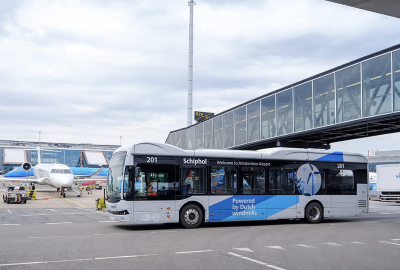Schiphol Airport operator submits plan to reduce use of APUs
Amsterdam Airport Schiphol has submitted an action plan to reduce the use of auxiliary power units (APUs) by stationary aircraft parked on the apron. The plan is to help reduce carbon emission at the airport.

APUs are usually mounted in the plane’s tail to provide autonomous starting power for the main engines, as well as electricity. But as APUs run on kerosene and can cause harmful emissions, as well as noise for apron workers when operating, excessive use of the equipment has been criticized. Reducing the use of APUs may help create healthy working conditions for apron workers while cutting the aviation sector’s overall carbon emissions.
In its action plan, Schiphol has included shortening the use of the APU. APU will be operational only five minutes before departure, halved from the current time of ten minutes. Their use can, however, be increased for pre-conditioned air.
As an alternative, Schiphol will provide PCAs (Preconditioned Air Units) and install them on suitable aircraft stands. These PCAs are large air conditioners that provide comfortable environment inside an aircraft when the aircraft's own air conditioning system is not switched on. Furthermore, Schiphol plans to transition to sustainable fuels and promote the use of fixed electrical ground power. In addition, it will run an awareness campaign for all its employees to explain the significance of reducing APU use.


